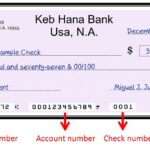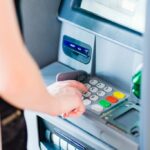It is essential to distinguish whether the available funds or the total funds withdrawn were high. The holder can only have access or withdraw funds from the actual funds and such a situation appears when your bank account is overdrawn.
The leading cause of confusion when the bank rejects a transaction, even if it appears that the bank account has funds. Let us know more about the overdrawn bank accounts and what happens if you do not have money.
How the bank separates the funds?
Contents
- Available Amount: The amount currently available at the time of withdrawal of depositors
- Total Money: Net deposits include available funds and unprocessed funds such as obscure checks or transactions/purchases. It is possible to withdraw funds beyond the account balance, but they are subject to consequences, bank conditions, and fees.
- Funds withdrawn beyond the available funds fall under overdrawn that can impose penalties.
- The overdrawn penalty will be paid from the new deposit amount, accessible to the balance account holders. Account-holders need to understand how to defend against them through overdrawn protection.
What does Overdrawn mean?
In simple words, when a person withdraws more money than they have, this situation is called overdraft or overdrawn.
Overdrawn protection is a program where it is considered your personal financial preferences, how often you write a check, and whether you want the overdrawn debit card transaction to be approved and subject to an overdrawn fee or declined tax save on those charges.
If you do not opt-in for some overdrawn protection and write a check for more than the amount in your bank account, your review will “bounce” (that is, the person receiving the review will not receive the money).
In this case, your bank will charge you a Non-Sufficient Amount (NSF) fee. Additionally, the check’s payee may also be charged (depending on their bank’s policies), which you should pay as a courtesy.
What happens if my bank account is overdrawn?
Don’t forget that overdrawn protection is not “free money.” You are responsible for covering those charges and transactions as soon as possible. Withdrawal from your account should be considered as worsening in rare situations, not a common way of paying bills.
Another thing to keep in mind is the timing of your transactions and debits, as this is one of the most common ways an overdrawn can occur. If it is a business, they will most likely do it within 1-2 business days, but if it is a friend or family member, they can set it aside for days or weeks before submission.
For debit card purchases, the merchant usually requests immediate authorization for the purchase to ensure you have sufficient funds in your bank account, but this can still happen several days beforehand the funds are withdrawn.
Ask your bank how they determine the order and timing of deposits and withdrawals when you can use the money deposited in your account.
➡LEARN MORE: How to Transfer money from Joint Account to Individual Account
Types of Overdraft fees
Overdrawn fees
When the value of the goods presented for payment costs exceeds the amount available in your checking account, you are charged an overdraft fee. Overdrawn fees typically range between $25 and $35. If your bank covers an overdraft item, you will have to return the total overdrawn plus fees to get your balance back.
For example, if you have $50 in your account and use your debit card to make $100 purchases, your bank may choose to honor the payment by charging $ 25. This means that you are now over $75, and you return that money to your bank.
Non-Adequate Fund (NSF)
If an item is presented for payment and funds are not available, banks charge a non-substantial funding charge. Although this amount may be less than the overdraft fee, these “withdrawal fees” will continue to be added. Each new item is presented for payment, while your checking account is a non-sufficient funds charge.
How to avoid paying overdrawn bank account fees?
The best way to prevent overruling your account is to monitor your account balance regularly and avoid spending more than you can afford. With online access and mobile applications, it is easy to stay on top of your account 24/7. Just recall that what you are keen-sighted is your available balance.
This is the bank’s most current record of your account and will not include transactions or checks you have just written. Other ways to avoid overdraft fees:
- Choose out of overdrawn coverage: Mainly for debit card or ATM transactions, but this means that if you do not have enough money available, your transaction will be rejected, which may be cheaper than the overdraft coverage fee.
- Set the alarm for low balance: If your bank has this facility, set up an email or mobile text alert to notify you when your account goes below a certain balance.
- Get a prepaid debit card: Like debit cards, and you have to deposit money on them. When you get rejected, you will not be charged.
Steps to keep in mind with the overdrawn bank account
While overdraw incidents occur to the best of us, with careful monitoring, knowing how your bank handles overdraft protection. You can keep your account in good standing and read the fine print to understand your bank’s overdraft policies.
If they notify you when there is an overdraft fee, whether it applies to debit cards, ATM withdrawals, and checks, a bar can be overdrawn. Review several banking options in your local area.
Keep an eye on any recurring debits you set, and always pay attention to them when determining your current balance. If possible, try to have a financial pillow of a few hundred dollars in your account. this was all about. this was all about my bank account is overdrawn and I have no money.






